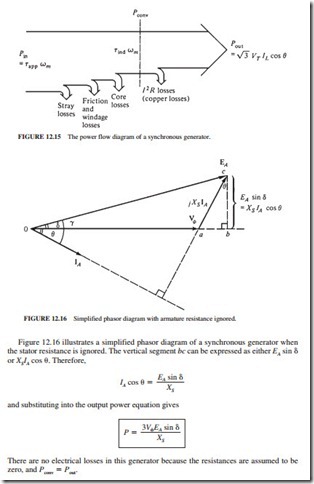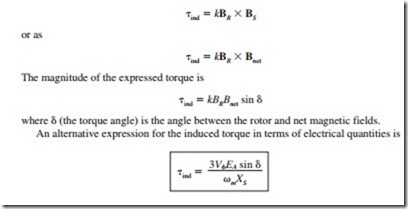POWER AND TORQUE IN SYNCHRONOUS GENERATORS
A synchronous generator is a machine that converts mechanical power to three-phase electric power. The mechanical power is given usually by a turbine. However, the rotational speed must remain constant to maintain a steady frequency.
Figure 12.15 illustrates the power flow in a synchronous generator. The input mechanical power is Pin Tappwm, while the power converted from mechanical to electric energy is
The output power equation shows that the power produced depends on the angle o (torque angle) between Vcp and EA. Normally, real generators have a full-load torque angle of 15 to 20°. The induced torque in the generator can be expressed as
Related posts:
Troubleshooting variable speed drives:Single-phase pulse width modulation (PWM) inverter
Proximity detectors:Capacitive Proximity Detectors
Variable Voltage And Magnetic Clutches:Eddy Current Clutches
Video Synchronization:Analogue Video Interfaces
Engine Piston System part3
Preamplifiers and Input Signals:Circuit Arrangements
MICROPROCESSOR BOOT CODE:CODE STRUCTURES
Understanding the Nine-Lead Delta Connection
Testing of d.c.Machines:Retardation or Running Down Test
Motor Winding
summary of bipolar Transistors
power Supplies:filter circuits
Tools for Motor Repair
Operation of the Single-Phase Capacitor-Start Motor


